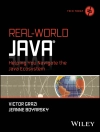The non-deterministic rule-based programming language of Constraint Handling Rules (CHR) features a remarkable combination of desirable properties: a foundation in classical logic, powerful analysis methods for deciding program properties – especially confluence – and an efficient execution model. Upon a closer look, we observe several limitations to this asset.
In this thesis, we introduce several concepts to amend for these short- comings. Firstly, we propose an unusually concise formulation of the two most important semantic interpretations of CHR. Secondly, we analyse the relationship between the major diverging interpretations of CHR. Finally, we found CHR on intuitionistic linear logic.
Über den Autor
The editor Uwe Schöning is a professor of Theoretical Computer Science at the University of Ulm, Germany. He introduced the low and high hierarchies to structural complexity theory to describe the internal structure of the complexity class NP. Later, he invented a much-cited SAT-Algorithm. He has also authored several popular textbooks on Logic in Computer Science.












